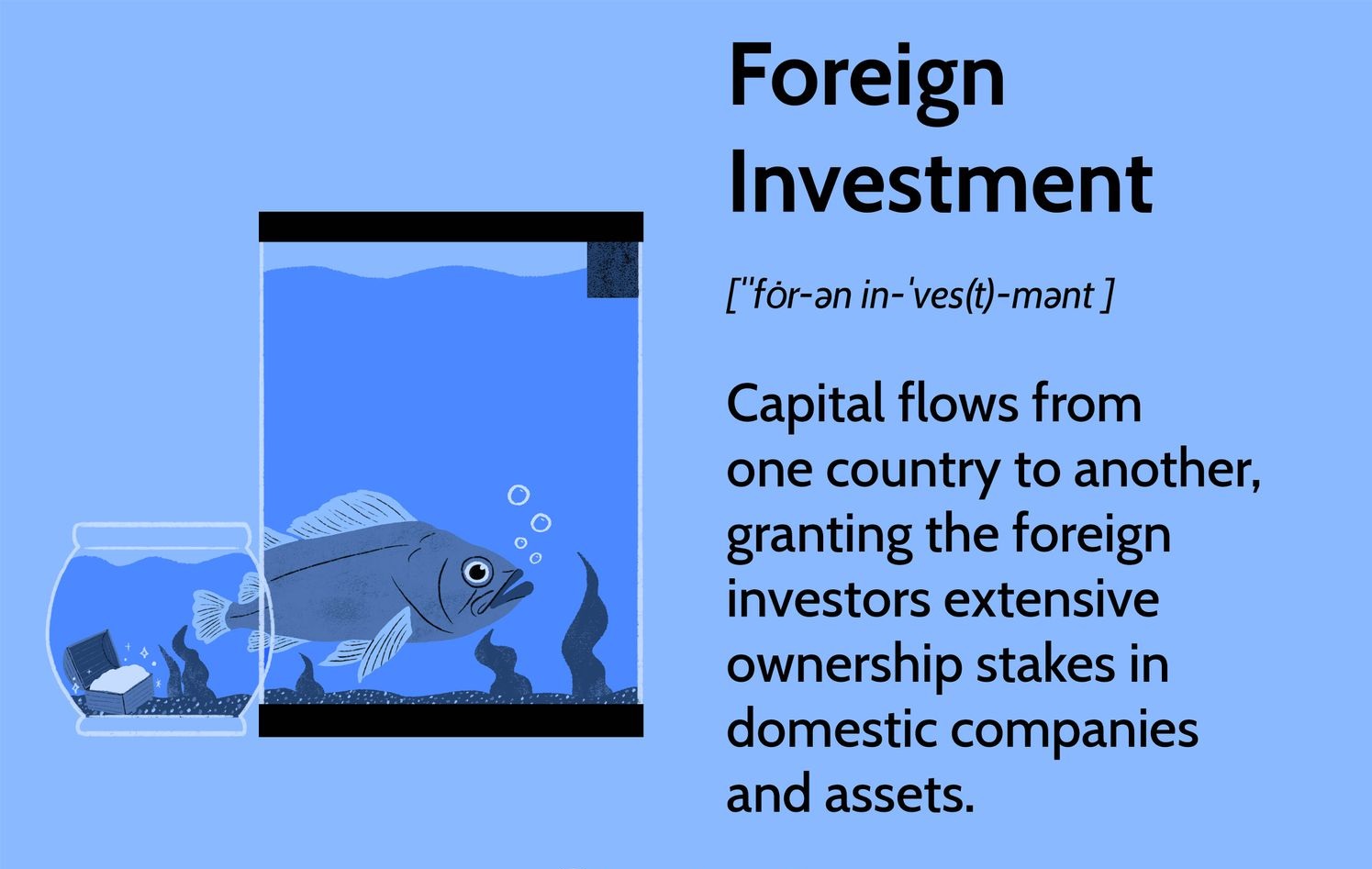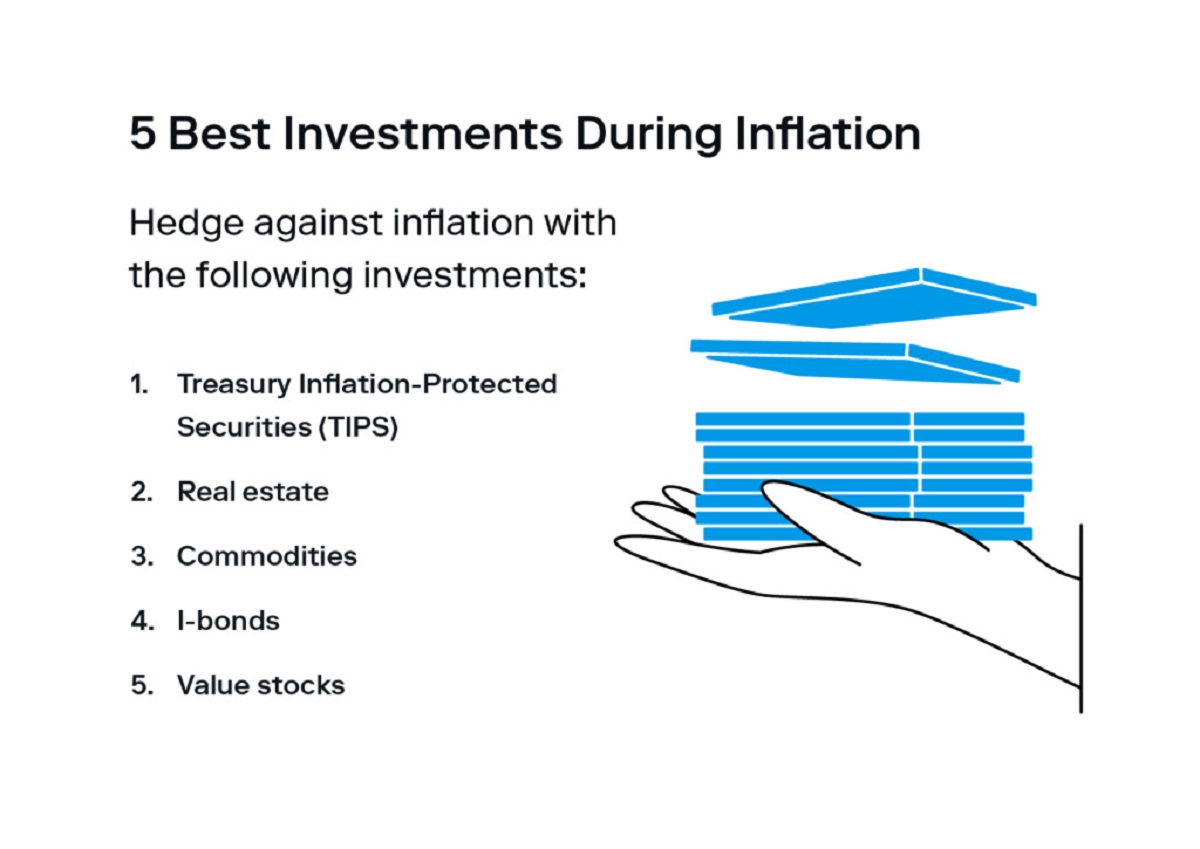Introduction
Foreign investments play a crucial role in the global economy, serving as a catalyst for economic growth and development. As the business landscape becomes increasingly interconnected, countries strive to attract foreign investments to boost their domestic economies, create employment opportunities, and enhance technological advancements.
Foreign investments refer to the investments made by individuals, businesses, or governments from one country into assets or projects situated in another country. These investments can take various forms, such as setting up subsidiaries or branches, acquiring existing businesses, or participating in joint ventures. The motivation behind foreign investments is often driven by the desire to tap into new markets, access resources, leverage technology, or benefit from favorable business environments.
In recent years, the world has witnessed a significant surge in foreign investments. Developing countries, in particular, have become attractive destinations for foreign investors due to their high growth potential, abundant natural resources, and emerging consumer markets. At the same time, developed countries continue to attract investments through their stable political systems, advanced infrastructure, and skilled labor forces.
This article aims to explore the different types of foreign investments, discuss their benefits and associated risks, highlight the factors influencing foreign investments, and examine the role of governments in facilitating and regulating these investments. Additionally, we will provide examples of successful foreign investments to illustrate their impact on both the host and investing countries.
Foreign investments have a profound impact on the economic, social, and technological landscapes of both the investing and receiving countries. Understanding the dynamics of foreign investments is essential for policymakers, businesses, and investors alike, as it can help shape economic policies, inform investment decisions, and foster international collaboration.
Throughout this article, we will delve into the various aspects of foreign investments, shedding light on their significance and exploring the intricacies of this global phenomenon.
Definition of Foreign Investments
Foreign investments are financial activities that involve individuals, businesses, or governments from one country investing in assets or projects located in another country. These investments can take many forms, ranging from acquiring ownership in a foreign company, establishing subsidiaries or branches, to participating in joint ventures with local entities. The key characteristic of foreign investments is the cross-border nature of the transactions.
Foreign direct investment (FDI) is a common form of foreign investment, where a foreign entity establishes a lasting interest in a host country’s company. This could involve either acquiring a substantial ownership stake or exercising significant control over the management and operations of the company. FDI is often considered a long-term investment, as it seeks to establish a presence and build relationships in the host country.
Foreign portfolio investment, on the other hand, involves the purchase of securities, such as stocks and bonds, issued by foreign companies or governments. Unlike FDI, portfolio investments are usually short-term and primarily driven by the expectation of financial gains through capital appreciation or dividend payments.
Foreign investments can also be categorized as greenfield investments or brownfield investments. Greenfield investments refer to the establishment of new ventures or facilities in a foreign country, typically involving the construction of new production facilities or infrastructure. Brownfield investments, on the other hand, involve the acquisition or investment in existing assets or companies, with the aim of expanding their operations or entering new market segments.
The objective of foreign investments varies among investors. Some investors may seek access to new markets to sell their products or services. Others may be interested in acquiring specific assets or resources that are abundant in the host country, such as natural resources or skilled labor. Additionally, investors may be motivated by the desire to leverage technological advancements or gain a competitive advantage through strategic alliances with local firms.
In summary, foreign investments involve cross-border financial activities where individuals, businesses, or governments invest in assets or projects located in another country. Whether it is through direct ownership, portfolio investments, greenfield ventures, or brownfield acquisitions, these investments play a significant role in fostering economic growth, promoting technological advancements, and facilitating international collaboration.
Types of Foreign Investments
Foreign investments can take various forms, depending on the objectives and strategies of the investors. Here are some common types of foreign investments:
- Foreign Direct Investment (FDI): FDI involves the establishment of a lasting interest in a foreign company, either through acquiring ownership or significant control over its operations. This type of investment allows the investor to participate in the management and decision-making processes of the company, providing an avenue for long-term growth and expansion.
- Portfolio Investments: Portfolio investments refer to the purchase of stocks, bonds, or other securities issued by foreign companies or governments. Unlike FDI, portfolio investments are typically short-term and primarily driven by the expectation of financial returns, such as capital appreciation or dividend payments.
- Joint Ventures: Joint ventures involve collaboration between a foreign entity and a local company to establish a new business entity. This type of investment allows for the sharing of resources, expertise, and risks, enabling both parties to leverage their respective strengths and enter new markets or industries.
- Greenfield Investments: Greenfield investments involve the establishment of new ventures or facilities in a foreign country. This could include the construction of new production facilities, the development of infrastructure, or the creation of new businesses from scratch. Greenfield investments provide an opportunity for investors to build operations tailored to the specific needs and market conditions of the host country.
- Brownfield Investments: Brownfield investments involve the acquisition or investment in existing assets or companies in a foreign country. This could include buying a stake in an established business, expanding existing operations, or diversifying into new product lines or market segments. Brownfield investments allow investors to leverage the existing resources, customer base, and market presence of the acquired company.
- Real Estate Investments: Real estate investments in foreign markets involve the purchase, lease, or development of properties for residential, commercial, or industrial purposes. Real estate investments can provide diversification, potential rental income, and capital appreciation opportunities for investors.
- Infrastructure Investments: Infrastructure investments focus on developing or upgrading public or private infrastructure in a foreign country. This could include investments in transportation networks, energy projects, telecommunications systems, or water and sanitation facilities. Infrastructure investments contribute to economic development, improve living standards, and attract other investments in the host country.
It’s important to note that these types of foreign investments are not mutually exclusive, and investors may choose to combine different strategies to achieve their desired objectives. The choice of investment type depends on factors such as the investor’s risk appetite, market conditions, regulatory environment, and the specific opportunities available in the host country.
Benefits of Foreign Investments
Foreign investments bring about a multitude of benefits to both the investing and host countries. Here are some of the key advantages associated with foreign investments:
- Economic Growth: Foreign investments can act as a catalyst for economic growth. They stimulate the host country’s economy by creating new job opportunities, attracting capital inflows, and boosting domestic consumption. Foreign investments often bring in new technologies, managerial expertise, and access to global markets, leading to increased productivity and competitiveness.
- Technology Transfer: Foreign investments can facilitate the transfer of advanced technologies and know-how from the investing country to the host country. This technology transfer can contribute to the development of local industries, enhance innovation capabilities, and improve productivity. Access to new technologies helps the host country to bridge technological gaps and keep pace with global advancements.
- Infrastructure Development: Foreign investments, particularly in infrastructure projects, can significantly contribute to the development of the host country’s physical infrastructure. Investments in transportation networks, energy systems, telecommunications, and other critical infrastructure not only improve the quality of life for local residents but also create an enabling environment for businesses to thrive.
- Employment Opportunities: Foreign investments often lead to the creation of employment opportunities in the host country. As new businesses are established or existing ones expand, they require a skilled and diverse workforce. This can help reduce unemployment rates, increase incomes, and enhance the overall standard of living for the local population.
- Transfer of Management Expertise: Foreign investments bring in experienced and skilled managers and professionals who can share their knowledge, expertise, and best practices with local employees. This transfer of management expertise can improve governance, operational efficiency, and overall business practices in the host country. It helps to develop local talent and build a sustainable business environment.
- Access to New Markets: Foreign investments enable companies to enter new markets and expand their customer base. By investing in a foreign country, companies can tap into local consumer preferences, reduce trade barriers, and gain a competitive advantage over other market players. This access to new markets can lead to increased sales, revenue, and profitability for both investing and host country businesses.
- Balance of Payments: Foreign investments often contribute to a positive balance of payments for the host country. Inflows of foreign capital can help finance current account deficits, reduce dependence on external borrowing, and strengthen the host country’s foreign reserves. This improves the overall financial stability and resilience of the economy.
Overall, foreign investments have a transformative effect on the host country’s economy, promoting economic growth, technological advancement, employment generation, and infrastructure development. For investing countries, foreign investments bring opportunities for market expansion, access to resources, and diversification of risks. It is essential for both investors and host countries to create a conducive environment for foreign investments and ensure that the benefits are maximized while mitigating potential risks.
Risks of Foreign Investments
While foreign investments offer numerous benefits, they are not without risks. Here are some of the key risks associated with foreign investments:
- Political and Regulatory Risks: Political instability, changes in government policies, and regulatory uncertainties can pose significant risks to foreign investments. Sudden policy shifts, nationalization of assets, or unfavorable regulations can adversely affect the investment climate and erode the expected returns on investment. It is essential for investors to carefully assess the political and regulatory landscape of the host country before making investment decisions.
- Exchange Rate Volatility: Fluctuations in exchange rates can impact the profitability of foreign investments. Exchange rate movements can affect the value of investment returns, repatriation of profits, and the overall financial performance of investments denominated in different currencies. Investors should be mindful of exchange rate risks and consider hedging strategies to mitigate their effects.
- Economic Risks: Economic factors such as inflation, interest rates, and economic downturns can affect the performance of foreign investments. Unstable economic conditions can lead to reduced consumer demand, increased costs of production, and lower profitability. Understanding the economic climate and conducting thorough market research is crucial in managing economic risks associated with foreign investments.
- Operational Risks: Operating in an unfamiliar business environment comes with inherent operational risks. These risks can include challenges related to cultural differences, language barriers, labor laws, supply chain logistics, and infrastructure limitations. Investing companies must adopt effective risk management strategies and adapt their operations to the specificities of the host country to mitigate potential operational risks.
- Legal Risks: Legal risks encompass a broad range of potential issues, including contract disputes, intellectual property infringements, corruption, and inadequate legal protection. Understanding the legal framework of the host country, ensuring compliance with local laws, and seeking expert legal advice are essential in mitigating legal risks associated with foreign investments.
- Market Risks: Market risks refer to uncertainties regarding market demand, competition, and changes in consumer preferences. Unforeseen market developments, such as new technologies or disruptive business models, can render investments less lucrative or even obsolete. Conducting thorough market analyses, continuously monitoring market trends, and adopting flexible strategies are crucial in managing market risks.
- Financial Risks: Financial risks include factors such as liquidity, credit, and solvency risks. These risks can arise from issues such as sudden changes in interest rates, credit defaults, insolvency of investment partners, or financial crises. Investors should carefully assess the financial stability of counterparties, diversify their investments, and maintain an appropriate level of liquidity to manage financial risks.
It is important for investors to recognize and evaluate the risks associated with foreign investments. By conducting comprehensive risk assessments, implementing effective risk management strategies, and staying informed about the evolving economic, political, and regulatory environments, investors can mitigate these risks and maximize the potential benefits of their foreign investments.
Factors Affecting Foreign Investments
Foreign investments are influenced by a variety of factors that shape the attractiveness and feasibility of investing in a particular country. Here are some key factors that affect foreign investments:
- Economic Stability: The economic stability of a country is a crucial factor in attracting foreign investments. Stable economic conditions, low inflation rates, sound fiscal policies, and a favorable investment climate contribute to the attractiveness of a country for investors. Countries with robust economic growth, well-developed infrastructure, and a skilled labor force tend to be more attractive for foreign investments.
- Political and Legal Environment: The political and legal environment of a country significantly influences foreign investments. Political stability, transparent governance, adherence to the rule of law, protection of property rights, and an efficient legal system are important considerations for investors. Countries with strong institutions, minimal corruption, and a well-established legal framework provide a conducive environment for foreign investments.
- Market Size and Potential: The size and growth potential of a market play a significant role in attracting foreign investments. Investors are usually attracted to countries with large consumer bases and growing middle-class populations. The presence of a demand for goods and services, along with the potential for market expansion, is an important factor for businesses seeking to invest in foreign markets.
- Infrastructure: The availability of quality infrastructure, including transportation networks, energy supply, and telecommunications systems, is crucial for foreign investments. Well-developed infrastructure ensures efficient movement of goods, reduces operational costs, and enhances connectivity with global markets. Countries with modern infrastructure are more likely to attract foreign investments, particularly in sectors such as manufacturing, logistics, and technology.
- Access to Resources: Foreign investments are often influenced by the availability of natural resources, skilled labor, and technological capabilities in the host country. Investors seek access to resources such as minerals, energy reserves, and agricultural land. Countries with a well-educated workforce, technological expertise, and research capabilities are attractive to investors looking to tap into specialized knowledge and skills.
- Market Entry Conditions: The ease of doing business and the regulatory environment are important considerations for foreign investors. Factors such as efficient bureaucratic processes, streamlined administrative procedures, transparent regulations, and investor-friendly policies facilitate market entry and reduce barriers to foreign investments. Countries that offer a conducive business environment, with clear and predictable regulations, tend to be more attractive for investors.
- Geopolitical Considerations: Geopolitical factors, such as geopolitical stability, international relations, and geopolitical alliances, can impact foreign investments. Investors closely monitor geopolitical risks, including geopolitical conflicts, trade disputes, and sanctions, as these factors can disrupt business operations and generate uncertainty. Stable geopolitical conditions provide a more favorable environment for foreign investments.
It is important to note that the significance of these factors may vary depending on the industry, investment size, and specific objectives of the investors. Each investor should conduct thorough country-specific research and analysis to assess the interplay of these factors and make informed decisions regarding their foreign investments.
Role of Government in Foreign Investments
The government plays a critical role in attracting and facilitating foreign investments. Governments have the power to shape the investment climate, create favorable policies, and provide supportive frameworks to encourage foreign investments. Here are some key roles that governments play in foreign investments:
- Policy Formulation: Governments are responsible for formulating policies that create an attractive investment climate. This includes providing clarity on regulations, ensuring transparency in administrative processes, and designing tax policies that promote investment. Governments also play a role in developing sector-specific policies to attract investments in strategic industries.
- Investment Promotion: Governments actively promote their country as an investment destination to attract foreign investors. This includes marketing campaigns, participation in international trade fairs and investment forums, and providing information and incentives to potential investors. Governments may establish investment promotion agencies to facilitate foreign investments and act as a one-stop shop for investors.
- Infrastructure Development: Governments invest in infrastructure development to create a conducive environment for foreign investments. They develop transportation networks, energy systems, telecommunications infrastructure, and other critical facilities that support business operations. High-quality infrastructure attracts investors by reducing logistics costs, improving connectivity, and enhancing overall competitiveness.
- Investment Incentives and Regulations: Governments may provide various incentives and regulations to encourage foreign investments. These can include tax incentives, subsidies, grants, streamlined permit processes, and preferential treatment for foreign investors. Governments also establish legal frameworks that protect investors’ rights, ensure intellectual property protection, and provide a stable and predictable business environment.
- Economic Development and Stability: Governments play a crucial role in fostering economic development and stability, which are essential for attracting foreign investments. Governments implement economic policies that promote growth, control inflation, maintain financial stability, and reduce economic volatility. A stable economic environment instills confidence in investors and minimizes risks associated with foreign investments.
- Educational and Skill Development: Governments invest in education and skill development initiatives to create a well-educated and skilled workforce. This helps attract foreign investments that require specialized knowledge and expertise. Governments collaborate with educational institutions and the private sector to align educational programs with industry needs and ensure the availability of a highly skilled workforce.
- Stakeholder Collaboration: Governments collaborate with various stakeholders, including businesses, industry associations, and international organizations, to foster foreign investments. They engage in public-private partnerships to promote investment opportunities and address challenges. Governments also participate in regional and international trade agreements to enhance market access, investment protection, and regulatory harmonization.
The role of the government in foreign investments is crucial in creating an enabling environment that attracts investors, fosters economic growth, and generates positive spillover effects. By implementing supportive policies, facilitating infrastructure development, providing incentives, and ensuring a stable business climate, governments can effectively harness the benefits of foreign investments for their countries.
Examples of Successful Foreign Investments
Foreign investments have played a significant role in shaping economies and driving growth in various countries around the world. Here are a few examples of successful foreign investments:
- Toyota’s Investment in the United States: Toyota’s decision to establish manufacturing plants in the United States has been a highly successful foreign investment. By setting up production facilities in states like Kentucky and Indiana, Toyota has not only created thousands of jobs but has also contributed to the growth of local economies. This investment has allowed Toyota to access the American market more efficiently, respond to customer demands quickly, and reduce transportation costs.
- Samsung’s Investment in Vietnam: Samsung Electronics, the South Korean multinational conglomerate, made a substantial investment in Vietnam to establish a production base for its electronics products. By leveraging Vietnam’s low labor costs and favorable business environment, Samsung was able to manufacture and export a significant portion of its smartphones and consumer electronics from Vietnam. This successful foreign investment has not only boosted Vietnam’s economy but has also contributed to the development of the local manufacturing and technology sectors.
- Amazon’s Investment in India: Amazon’s entry into the Indian market through foreign direct investment has had a transformative impact on the country’s e-commerce industry. By investing billions of dollars in establishing warehousing and logistics infrastructure, Amazon was able to offer a wide range of products and efficient delivery options to Indian consumers. This investment has fueled the growth of e-commerce in India, created employment opportunities, and facilitated the expansion of small and medium-sized businesses through Amazon’s platform.
- Foreign Investments in Singapore’s Financial Sector: Singapore has successfully attracted foreign investments in its financial sector, making it a global hub for finance and banking. Foreign banks and financial institutions have established a presence in Singapore to tap into its robust and well-regulated financial market. This has not only contributed to the growth of Singapore’s economy but has also facilitated the transfer of financial expertise, the development of local talent, and the provision of a wide range of financial services to the region.
- Foreign Investments in Renewable Energy in Germany: Germany’s commitment to renewable energy has attracted significant foreign investments in sectors such as wind and solar power. Foreign companies have made substantial investments in building renewable energy infrastructure, including wind farms and solar installations. These investments have not only helped Germany achieve its renewable energy targets but have also created jobs, reduced carbon emissions, and contributed to the country’s transition to a more sustainable energy mix.
These examples demonstrate the positive impact that foreign investments can have on the economies of both the investing and host countries. Successful foreign investments foster economic growth, create employment opportunities, facilitate technology transfer, and drive innovation. Governments and investors can study these examples to identify strategies, best practices, and lessons learned to enhance their own foreign investment initiatives.
Conclusion
Foreign investments are a vital driver of economic growth, development, and innovation in today’s interconnected world. They involve individuals, businesses, and governments investing in assets or projects located in foreign countries, with the aim of accessing new markets, resources, technologies, or business opportunities. Throughout this article, we have explored various aspects of foreign investments, including their definition, types, benefits, risks, factors affecting them, and the role of governments in facilitating and regulating these investments.
Foreign investments bring numerous benefits to both investing and host countries. They contribute to economic growth, create employment opportunities, facilitate technology transfer, stimulate infrastructure development, and enhance market access. Foreign investments can also promote cultural exchange, knowledge sharing, and international collaboration. However, it is important to acknowledge that foreign investments are not without risks. Political instability, regulatory uncertainties, economic downturns, and market fluctuations can pose challenges for foreign investors.
The success of foreign investments depends on various factors, including economic stability, political and legal environment, market potential, infrastructure, resources, and government policies. Governments play a crucial role in attracting and supporting foreign investments by formulating favorable policies, providing incentives, developing infrastructure, and ensuring a stable and conducive business climate. It is through collaborative efforts between governments, investors, and other stakeholders that the potential of foreign investments can be harnessed effectively.
Foreign investments have proven to be successful in various industries and countries worldwide. Examples such as Toyota’s investment in the United States, Samsung’s investment in Vietnam, Amazon’s investment in India, foreign investments in Singapore’s financial sector, and investments in renewable energy in Germany demonstrate the significant economic impact and positive outcomes that can be achieved through foreign investments.
In conclusion, foreign investments play a vital role in driving economic growth, fostering innovation, and facilitating international collaboration. With careful consideration of the associated risks and thorough analysis of various factors, governments and investors can work together to create an environment that encourages and maximizes the benefits of foreign investments, ultimately contributing to the prosperity and development of both investing and host countries.

























